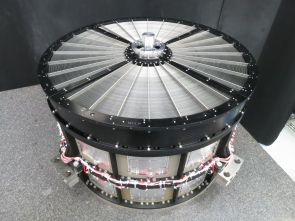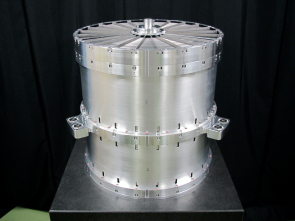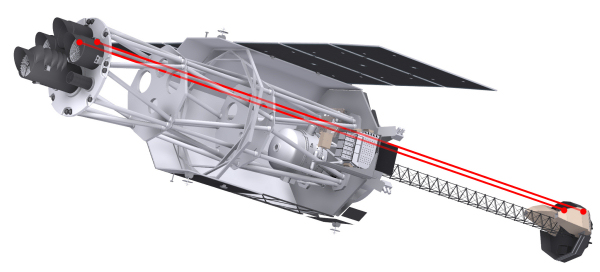Spacecraft
|
Note: Hitomi (formerly ASTRO-H) was a high-energy astrophysics space observatory, developed by the Japan Aerospace Exploration Agency (JAXA) in collaboration with institutions in Japan, the US, Canada, and Europe. It carried four instruments that together spanned the energy range 0.3-600 keV. The science goals of this mission included studying the dynamics of hot gas in galaxy clusters, the accretion of matter onto supermassive black holes at the cores of distant galaxies, and the acceleration of cosmic-ray particles up to very high energies. The mission was launched on 17 February 2016 at 08:45 UTC. On 28 April 2016, JAXA announced that they would discontinue operations of Hitomi as it was no longer possible to communicate with the satellite following an anomaly which appeared to have resulted in both solar array paddles having broken off from the spacecraft body. In June 2017, ESA announced that it will participate in Japan's X-ray Astronomy Recovery Mission (XARM), designed to recover the science of the Hitomi mission. |
Hitomi (known as ASTRO-H prior to launch) is a large spacecraft with a total launch mass of approximately 2700 kg (including 30 kg of fuel). Once in space, the satellite will deploy a 6-m extendable boom as part of the Hard X-ray Telescopes on board, making the total length of the spacecraft about 14 m.
The satellite carries four grazing-incidence reflecting telescopes: two Soft X-ray Telescopes (SXT) and two Hard X-ray Telescopes (HXT).
 |
| X-ray focussing mirrors (schematic). Credit: JAXA |
The mirror systems employed in these telescopes are conically approximated Wolter I grazing incidence optics – the type of mirrors used to focus high-energy X-rays. These telescopes are quite different from those used for optical astronomy: in order to be reflected (rather than absorbed) by a mirror, X-rays must barely graze its surface, hitting it at a very small angle, 1° or even less.
Each of the four telescopes on Hitomi contains hundreds of conical shells coated in reflecting material, nestled into one another to make the total reflecting surface as large as possible. There are 203 nested shells in each of the two Soft X-ray Telescopes (SXT), and 212 in each of the two Hard X-ray Telescopes (HXT).
 |
 |
| Soft X-ray Telescope. Credit: NASA | Hard X-ray Telescope. Credit: JAXA |
The two Soft X-ray Telescopes (SXT) have a focal length of 5.6 m each, and the two Hard X-ray Telescopes (HXT) have a focal length of 12 m each; the latter is obtained by deploying a 6-m extendable boom, at the end of which the detectors are located, once the satellite is in orbit. A similar structure is already being used on NASA's Nuclear Spectroscopic Telescope Array (NuSTAR), a hard X-ray space telescope that was launched in 2012 and, once in orbit, deployed a 10-m long mast.
The observatory is equipped with four instruments: the Soft X-ray Imager (SXI) and the Soft X-ray Spectrometer (SXS), each receiving light focussed by one of the Soft X-ray Telescopes in the energy range between 0.3 keV and 12 keV; the Hard X-ray Imager (HXI), which consists of two units that receive light focussed by the two Hard X-ray Telescopes in the energy range between 5 keV and 80 keV; and the Soft Gamma-ray Detector (SGD), a non-focussing device to track higher energy photons, between 40 keV and 600 keV, that is also sensitive to polarisation.
 |
| The hard X-ray imaging system on Hitomi. Credit: JAXA |
Hitomi has been built by a major international collaboration led by JAXA with over 70 contributing institutions in Japan, the US, Canada, and Europe. In addition to ESA, the international members include NASA/Goddard Space Flight Center, Stanford University, The Netherlands Institute for Space Research (SRON), the University of Geneva, CEA Saclay, the AstroParticle and Cosmology laboratory (APC) at Paris Diderot University – Paris 7, and the Canadian Space Agency (CSA).
